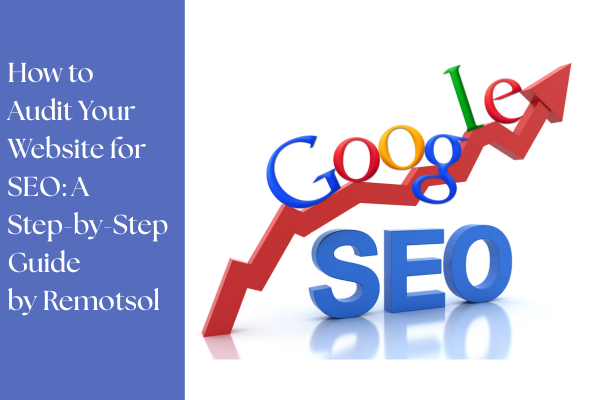
If your website isn’t ranking well on Google or your traffic has suddenly dropped, chances are your SEO needs a health check. A thorough website SEO audit helps uncover technical issues, content gaps, and optimization flaws that may be hurting your visibility online.
At Remotsol, we provide expert SEO services for businesses looking to boost their rankings and grow traffic organically. In this guide, we’ll walk you through how to perform a comprehensive SEO audit in simple, actionable steps.
1. Check Your Website’s Visibility on Google
Before diving into technical tools, start with the basics.
-
Search “site:yourdomain.com” on Google to see how many pages are indexed.
-
If the number is low or shows irrelevant results, it could indicate indexing issues.
Also, search your brand name. If you don’t appear in the top results, it’s a red flag for branding and authority.
2. Run a Technical SEO Scan
Use tools like Screaming Frog, Ahrefs Site Audit, or Google Search Console to identify technical issues.
Key areas to focus on:
-
Broken links (404 errors)
-
Duplicate content
-
Redirect chains
-
Slow-loading pages
-
Missing or duplicate title tags and meta descriptions
-
Non-mobile-friendly pages
At Remotsol, our team uses enterprise-level tools to spot these issues fast and recommend fixes.
3. Analyze Page Speed and Core Web Vitals
Google prioritizes fast, user-friendly websites.
Check your performance using:
Focus on:
-
Largest Contentful Paint (LCP)
-
First Input Delay (FID)
-
Cumulative Layout Shift (CLS)
If your site takes more than 3 seconds to load, you’re losing both traffic and conversions. Remotsol helps optimize speed with proper image compression, caching, and clean code.
4. Evaluate On-Page SEO
Review your key pages for proper optimization:
-
Each page should have one H1 tag and include your target keyword.
-
Ensure meta titles are under 60 characters and descriptions under 160 characters.
-
Use alt text for all images.
-
Include internal links to other relevant pages on your site.
-
Content should be unique, useful, and readable.
Pro tip: At Remotsol, we use proven content frameworks to improve readability, keyword density, and structure.
5. Check Mobile Friendliness
More than 60% of web traffic now comes from mobile. Use Google’s Mobile-Friendly Test to identify issues.
Make sure:
-
Fonts are readable on smaller screens
-
Buttons are easily clickable
-
Layout adapts smoothly on all devices
Remotsol specializes in responsive design, ensuring that your site performs equally well on mobile and desktop.
6. Audit Your Backlinks and Authority
Use tools like Ahrefs, Semrush, or Moz to evaluate your domain’s authority.
Check:
-
Total number of referring domains
-
Spammy or irrelevant backlinks
-
Competitor backlink profiles
Backlinks from reputable sites improve your rankings. If your backlink profile is weak or toxic, consider a link-building strategy—something our SEO team at Remotsol handles regularly.
7. Monitor Performance and Track Progress
Once you fix the above issues, it’s essential to track results:
-
Set up Google Analytics and Search Console
-
Monitor changes in impressions, clicks, and average position
-
Track keyword movements and page performance
At Remotsol, we offer monthly SEO audits, reporting, and strategy updates so your business keeps growing without guesswork.
Final Thoughts
An SEO audit isn’t a one-time task—it’s an ongoing process to stay ahead of algorithm changes and competitor tactics. Whether you’re running a blog, ecommerce store, or a corporate site, auditing your website for SEO is critical for long-term success.
If you’d rather not handle all this yourself, Remotsol’s SEO experts are ready to step in. From technical audits to full-scale optimization, we offer customized solutions that bring real results.

